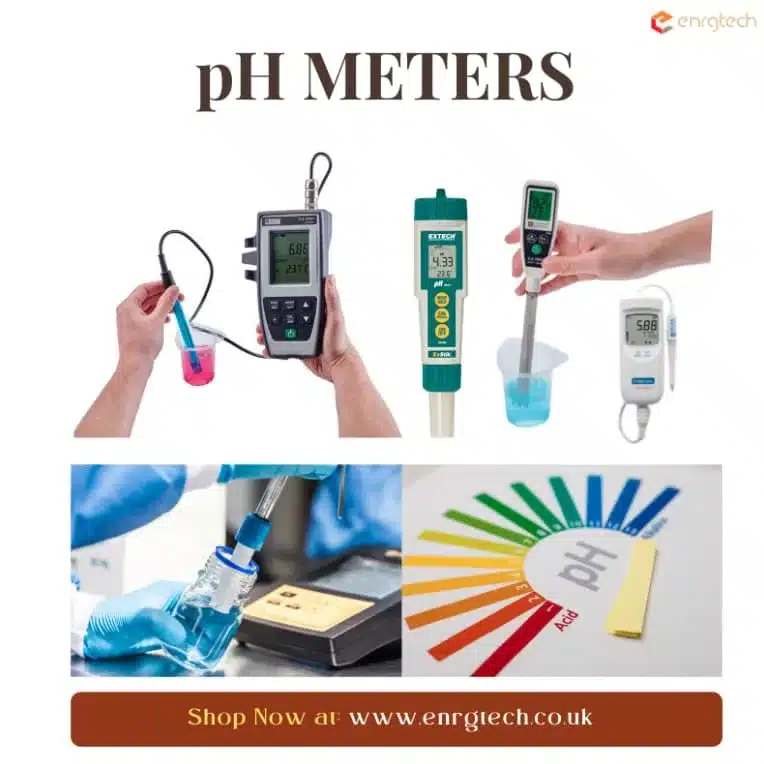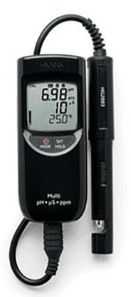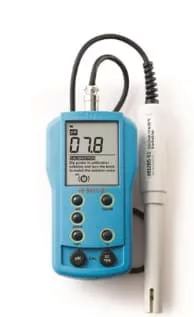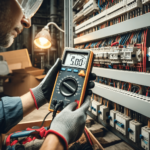
Introduction
The delicate balance of acids and bases is critical across a vast array of scientific and industrial fields. Also, inaccurate pH readings can be a costly mistake, leading to poor product quality, failed experiments, or even safety hazards. Enter the world of a pH meter—offering accuracy and reliability that makes all the difference. Whether you’re new to pH measurement or looking to refine your techniques, this ultimate guide has got you covered with the basics, significance, types, calibration, and unparalleled accuracy that test strips simply can’t match.
Understanding pH and Why It Matters?
pH (power of Hydrogen) is a fundamental concept in various fields that reflects the acidity or alkalinity of a substance. It is a logarithmic scale that typically ranges from 0 to 14, where 7 being neutral, values below 7 are acidic, and above 7 are basic (alkaline). This measurement is significant since pH levels can influence chemical reactions, nutrient availability, and equipment longevity. pH measurement has a huge impact in everyday life—from ensuring safe drinking water and balanced soil for farming to keeping our bodies healthy. For instance, maintaining proper pH in soil boosts crop health, while in water treatment, it ensures safe drinking standards. Ultimately, knowing and controlling pH helps preserve balance, functionality, and safety across various systems.
Defining pH Meters: Core Purpose & Importance
pH meters, also known as pH testers, are scientific instruments that measure the pH value—a measure of acidity or alkalinity—across a vast array of applications. These devices measure the hydrogen ion concentration (H+) in a solution, expressed as pH. The core purpose of a pH meter is to provide a highly accurate, reliable, and reproducible measurement of pH values. Their importance extends across numerous fields, both academic and industrial settings. From monitoring water quality and soil analysis to ensure product quality and safety, a pH tester is an indispensable and precise way to determine or assess specific pH levels. They help users make informed decisions, maintain compliance with industry standards, and optimise processes.
Most Standard Types of pH Meters Explained: A Brief Overview
With technological advances, pH meters now come in various forms to meet different needs. Some of the standard types include:
Benchtop pH Meters – These are larger, stationary units designed for laboratories for detailed analysis. They come with large displays, advanced data capabilities, and more calibration options. A benchtop pH meter offers high precision and can measure multiple parameters, making it ideal for various applications.
Portable/Handheld Meters – These handheld pH meters are designed for on-the-go fieldwork, offering a balance of accuracy and portability. They are compact, battery-powered, and feature a separate electrode connected by a cable.
Pen-Style Meters – Pen-type pH meters, also called pocket testers, are the most compact and basic pH meter types. They are simple, affordable, and ideal for quick checks and on-the-spot measurements. A pen-style meter is a single, all-in-one unit known for its small size, ease of use, and affordability. While compact, they offer surprisingly good accuracy for everyday tasks, providing instant results wherever you are.
Online/Industrial Meters – Industrial pH meters are robust systems that are permanently installed in pipelines or tanks. They offer continuous, real-time automatic monitoring of pH in industrial processes. Online pH testers set the standard for 24/7 reliability across water treatment, chemical manufacturing, and any process where pH balance is critical.
pH Meter Calibration: When and How to Get Accurate Results?
Calibrating a pH meter is a critical step for maintaining the accuracy, reliability, and instrument longevity. It is also essential to understand both the “when” and “how” to calibrate a pH tester. To answer this, calibration should be performed regularly—ideally before each use or whenever you notice inconsistent readings. Calibrate a pH meter when using it for different sample types, or whenever the electrode has been in storage for an extended period.
Moreover, calibration should always be performed using fresh, standardised buffer solutions (usually at pH 4.01, 7.00, and 10.01) to account for any sensor drift or aging. Start by thoroughly rinsing the electrode with distilled water, then immerse it in the first buffer, adjust the meter, and repeat the process for additional points.
pH Meters vs. pH Test Strips: Finding the Difference
When it comes to measuring the acidity or alkalinity of solutions, both pH meters and pH test strips are popular choices, but they serve different needs. pH meters are electronic testers that provide highly accurate digital readings of a solution’s acidity or alkalinity. They feature electrodes and provide outputs often to two or more decimal points. On the other hand, pH test strips are simple, affordable, and portable strips that offer a quick way to get an approximate colour-based indication of pH levels. While portable and convenient, a pH test strip often lacks the accuracy and reliability of a pH meter. Ultimately, the choice between the two depends on your accuracy requirements, budget, and testing environment.
Final Thoughts: The Enduring Value of the pH Meter
The pH meter is more than just a piece of equipment; it is a cornerstone of modern science and industry that empowers us to understand and control the chemical world around us. From ensuring the safety of our food and water to driving scientific discovery, its applications are endless. These devices, which come in several standard types, are superior to less precise methods like test strips. Proper calibration is essential to ensure the reliability of pH meter readings, ultimately making them indispensable for any task requiring precise pH determination.























